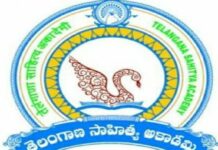During the Nizam’s period, the population was considerably lower, and the relatively small beef need was met with local animals like cows, bulls, calves and buffaloes. There was no export at that time so the meat was cheaper and was not weighed exactly as it is today. Local animals used to graze in the surrounding grasslands and that’s why their meat tasted good. The animals used to be healthy and fat. Cow’s meat was preferred at that time (and even now) because of its good taste and nutrition.
The meat was cheaper and the income of butchers was satisfactory. Now the population has gone up affecting the meat business. Beef is now also exported from the state (Andhra Pradesh), mostly to Vietnam, Iran, Iraq, Saudi Arabia, UAE and Russia. The export to U.S and Europe has declined because of the fear of Mad Cow, and Foot and Mouth diseases. Beef from India is preferred all over because the animals are bred organically and not according to new scientific systems and also since there are fewer diseases afflicting them.
Today it has became a fashion among various castes to eat meat. As the benefits of beef are scientifically proven, many people have taken to beef eating. The upper-castes earlier used to eat beef for medicinal purpose but now it is increasingly becoming part of their regular meals.
Anti Cow Slaughtering Act:
One group of Hindus in A.P that worships the cow started a campaign against cow slaughter and had filed cases in the courts. They have argued in relation to Muslims that cow sacrifice is not essential during Bakrid and that therefore the Muslims should be made to forego cow slaughter. As a result of this campaign the “ A.P. Prohibition of Cow Slaughter and Animal Preservation Act, 1977” was passed. The Act says that, in exceptional cases, a cow or any animal can be slaughtered if a doctor certifies it to be diseased and harmful to the public interest (through infection to other animals, etc). Cow slaughter is also allowed for research and experimental purposes and only in government institutions. Before this Act there was another law called “The A.P.(Telangana Area) slaughtering of animals Act 1950”. This was not prohibitory, but the1977 Act that replaced it, is. The prohibition of cow slaughter was added to it. With this new Act, cows and their calves (male and female) and all those animals that are used for agriculture, dairy cattle and the powerful draught animals that can be useful in various activities may not be slaughtered. When animals not in these categories are slaughtered, their anti-mortem inspection followed by a 24-hour rest period is required. Once slaughtered the meat is inspected by a veterinary doctor to ascertain whether the meat is edible or not. After the doctor’s approval the meat is sent to the shops. These rules were imposed after 1977 Act. Another effect of this regulation was that the cow’s meat became unavailable openly which led to its illegal and secret slaughtering.
Before this Act (1977) there was also a central act “The prevention of cruelty to Animals Act, 1960”. Under this enactment the “Transportation of Animals Rules’ were formulated in 1978, which specifies in detail how the cattle have to be transported. For example it says that the vehicle should not take more than a prescribed number of cattle, the vehicle should have a soft surface, first aid box, enough fodder and water, and during long journeys the cattle should be taken out for a walk, etc. In 2001 the ‘Slaughter Houses Rules’ were framed in detail for slaughtering and inspection. After the 1977 Act, cow’s meat was banned and in its place bull’s meat became preferable in A.P, whereas in other states where similar acts were passed buffalo meat became preferable.
The other important implication of this Act was that many Hindu communities, seeing business opportunities entered into cattle and meat trade in a big way. On the other hand these same laws are constantly used to harass Muslim butchers and traders especially during the period of Bakrid.
Slaughterhouses:
In Hyderabad there used to be five slaughterhouses under MCH. They were in Ranmastpura (beef) Amberpet and Bhoiguda (beef and mutton), Jiyaguda and Gowlipura (mutton). These slaughterhouses were located a distance away from the residential areas. As the population grew around the slaughterhouses the people started complaining about the inconveniences and approached the court. In June 2003, the High court ordered the closure of all the slaughterhouses with in six months that is before 31st December 2003. The government proposed modernization of the slaughterhouses to which the court agreed and said that after the modernization is done the court order would remain cancelled. But the Andhra Pradesh government did not do any thing in the prescribed six months. In order to pressurize the government to implement the modernization promise, AIJQAC was formed on 31st December 2003 and began a campaign. As a result a resolution was passed in the standing committee of MCH regarding the modernization of slaughterhouses. This also happened because of active interest of MIM President late Sultan Salahuddin Owasi and cooperation of Qureshi Community. The modernization of four slaughterhouses began and they are expected to be functional in October 2012 after much delay.
Beef costing:
After modernization the price of beef is expected to go up. At present an expense of twenty rupees is incurred per animal. This is likely to increase to 125 rupees. The maintenance of slaughterhouses in Hyderabad is being offered to multi national companies, which again surely will make the beef even costlier. The four slaughterhouses that are modernized in Hyderabad are the first of their kind taken up by any government in India. Taking over and operating these slaughterhouses means having governments support the beef exporting business and that’s why most of the slaughterhouses and exporting companies are showing keen interest.
Presently there are no taxes on meat since it is a raw product whereas there is a small tax on sale and purchase of cattle. It is the perspective of our association that if beef export is stopped then beef can be sold at Rs.60 per kg (present rate Rs.160 kg). Though the export is not good for the local beef business, it has created large demands for by-products. Our association wants the best beef to be sold to the citizens at the cheapest possible rates.
Beef Business in Hyderabad:
Beef shops in the city mostly sell buffalo or ox meat. The animals are procured from agricultural markets in various districts but mainly form the two cattle markets in Hyderabad situated in Narsingi and Erragadda. After the closure of slaughterhouses it has become difficult to estimate the number of animals slaughtered. In Changicherla slaughter house 4000 animals are slaughtered daily out of which nearly 80% of the meat is exported. Secondly after the closure of the slaughterhouses many private, illegal and small informal slaughterhouses came up in the neighbouring localities since it is difficult and costly to procure meat from the distant slaughterhouse in Changicherla.
The beef business suffers from various difficulties the most prominent being the confiscation of animals on the highways by goons who operate under the cover of animal rights and cow protection committees. These are well-organized groups, active in the whole of the State. The police are not of much help. They are first of all ignorant of relevant laws and also their natural sympathies are more with the animal protectionists. They end up in supporting the goons rather than the legal traders. There are many cases of confiscated animals being used for private purposes or resale in the market rather than of sending them togoshala. Apart from these difficulties there are no cold storage facilities and existing facilities are becoming costly.
Beef opposing lobby:
Animal Rights Activists and Cow Protectionists are one and the same. I say this because animal rights activist only protest in the name of cows and buffalos, they are not active against the meat, pork and poultry business that also cause cruelty to animals. The Cow Protectionists are well organized, well financed and adapt various strategies starting from the local police stations up to the courts and to the Ministers. For example they financed a booklet on cow protection laws for the AP Police in 2003, and based on it they conduct sensitizing programmes to the police department at their own expenses. This booklet is biased and doesn’t show aspects in the law/act that approve the slaughtering. They have also marked areas in the city for fund raising; for example in a business area in Hyderabad they made have a target of Rs.20 lakhs which is divided by the total number of traders in this area. The traders—Hindus and Muslims—are supposed to pay the fixed amount without any excuse. I know a trader who pays twenty thousand rupees per year to Goraksha Samithis. There are 102 animal protectionist organizations in A.P out of which 13 are in Hyderabad. They maintain hundreds of goshalas. These goshalas have increased significantly in the last decade. As a result of their activities not only do the butchers but also dairy-farmers suffer difficulties and losses.
Government and Politics:
The government supports the cattle trade and meat industry through many acts and institutions: the A.P agricultural produce and livestock act 1966 and the A.P Agricultural Marketing Board, the Animal Husbandry and Fisheries Department, the Meat and Poultry Boards are some examples. There are 317 big and 577 small market yards in the State in which fruits, vegetables, and agricultural produce are sold along with the livestock of various kinds. The government charges one percent as market fee and two percent as commission on live stock trade and issues receipts. The government has earned nearly five hundred crores on overall trade last year. The cattle traders purchase cattle from these markets and resell in the specific cattle markets from where the butchers buy their animals. There is a slaughterhouse in each municipality. In the non-Muslim dominant districts the Christians and Hindus maintain and use these facilities.
The farmers’ income from livestock has more importance than the income from agricultural produce. Agricultural produce has to be sold quickly whereas stock can be sold at the time of need. The farmers know the usefulness cycle of their livestock in terms of agriculture and dairy and decide accordingly. Farmers benefit most in the meat trade. The government protects the farmers but it doesn’t create a conducive environment for the meat business because of the pressure of cow protection lobbies. As a result of this, the meat business is under constant threat and strain. In spite of these difficulties the meat consumption and its export are increasing. The government should realize these facts.
No political party except the MIM (Hyderabad based Majlis-e-Ittehadul Muslimeen) supports us in times of trouble. This year I was in Tadepalligudem (West Godavari district) as a lawyer, with court orders to take repossession of cattle captured by the local cow protectionist organizations from the traders. The whole village gathered against us. One official even ask me to escape. I sent an sms about my situation to Hyderabad MP Mr Asaduddin Owasi, who was in Delhi. He responded immediately. Within a few minutes the police reached the spot and saved us. We executed the court orders under police protection and recovered the cattle that were legally and rightfully purchased.
AIJQAC:
There are more than one lakh members of butcher community in A.P and they come in the category of OBC and the BC(E) list in AP. Their representative body was the AIJQ (All India Jamaiat ul Quraish, Hyderabad). In 2003 as a reaction to the AIJQ policy in relation to the closure of slaughterhouses in Hyderabad AIJQAC was formed. AIJQ supported the closure and shifting of slaughterhouses from the city, whereas a large number of the Qureshi community opposed it. To express their opposition AIJQAC was formed and under its banner. Rallies, hunger strikes, dharnas and fifteen days closure of meat shops were organized. As a result the government took the modernization of old slaughterhouses seriously. The AIJQAC is presently supported by a majority of the Qureshi community in Hyderabad. The objective of AIJQAC was to fight for the slaughterhouses and provide legal protection. It fights court cases for Qureshi community against the harassment of cow and animal protectionists and also against biased officials. It plays a role in resolving the differences and disputes between other organizations of the community in other states. It proposes to work for the educational upliftment of the community and encourage social reform. #KhabarLive






